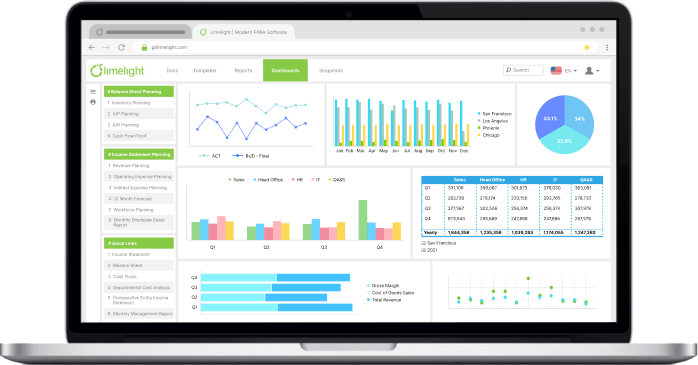Financial Planning & Analysis
Generating Deeper Analysis from Financial Statements
By Duncan Morrison |
Published: January 20, 2022
By Duncan Morrison |
Published: January 20, 2022
Data analysis is one of the most challenging parts of any profession. It is not just a technical or a mathematical problem, it is a process that requires creativity and the ability to see beneath the data to uncover real insights. In finance, analysis is what separates professionals from amateurs, what the analysts can reveal is what drives the value of the finance department and provides the most benefit to the organization.
The manual components of analysis are now performed by computers that can process large datasets in a matter of seconds and detect variances and patterns instantly. What once seemed like mammoth tasks can now be completed by devices that fit in a pocket. Computers have shifted the role of finance professionals; machines are better at performing mass calculations so finance experts can focus on value-added tasks.
While technology has transformed the office of finance, there remain aspects of contemporary finance work that are still stuck in the past, using outdated, clunky technology, and not providing full value to their organization as a result. CFOs already know how to analyze financial statements to deliver valuable insights to their cohort but what if finance experts could increase their value through modern technology?
Finance teams can invest in more education for their workforce or expand it, but these solutions are risky given the state of the labor market. Finance leaders need solutions outside of increased "human capital” to improve their business. The most cost-effective way is to empower your finance team with improved tools and processes, thereby cutting costs and increasing the quality of the team’s output.
Technological Improvements
Modern finance professionals have been using Excel since High School or earlier. Excel’s shortcomings have become norms and finance professionals have been forced to cope and adapt to limitations. Static spreadsheets are burdensome to aggregate, reconcile, and validate, lengthening the analysis process. Modern finance teams also work with real-time data but must use static data inside their spreadsheets affecting the quality of life and insights teams can uncover.
Cloud-based FP&A technology, in contrast, sources data directly from a client’s ERP system along with other external sources, shortening the time spent aggregating data and increasing the amount of time spent on more productive activities like analysis. Instead of spending hours trawling through spreadsheets and looking for information in disparate corners of the organization, finance experts can instead devote their work hours to figuring out what the data is saying. Beyond data aggregation, Cloud FP&A also improves the way that data is structured, making analysis easier than ever.
With static spreadsheets, it might be easy to assemble all your files in one folder, but it is difficult to connect the data for analysis, filtering, and roll-ups. The difficulty of establishing these relationships is one of the biggest challenges facing finance teams and stems from the same issues affecting data aggregation, data silos, and disparate data sources. The solution lies in the way Cloud FP&A organizes the data not only how it collects it.
Cloud FP&A harnesses the power of advanced data structures and uses them to add more interactivity to an organization’s financial data. Users can also cycle through further categories such as geographical location or individual sales reps. Processing drilldowns, roll-ups, slicing, dicing and more is easier in comparison to static spreadsheets with the calculations happening automatically within one workspace rather than across a series of disparate spreadsheets. The business applications are endless and have already been implemented across the private and public sectors.
Conclusion
Given recent and ever-present disruptions, finance teams need the best possible tools to aid their organization by conserving resources and creating value. Business disruptions will only continue, and firms must be sure that their tools make the job of navigating through stormy weather more manageable. Firms can improve their performance and resilience by adopting innovative technology like Cloud-FP&A which simplifies the process of analysis and adds layers of depth.
Learn more about improving your analysis process by booking a demo with Limelight today.
Subscribe to our newsletter


